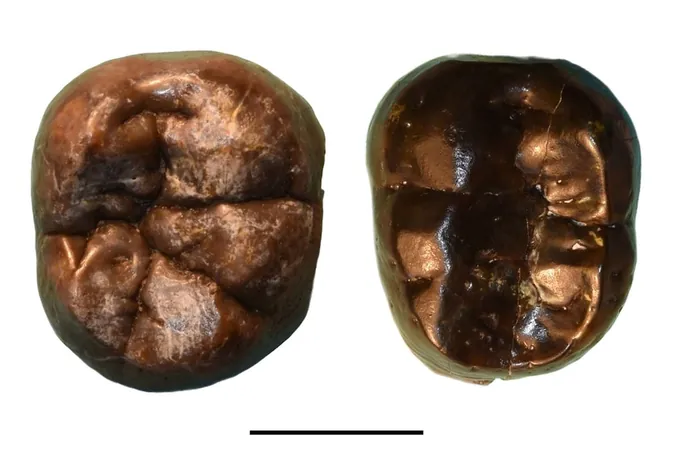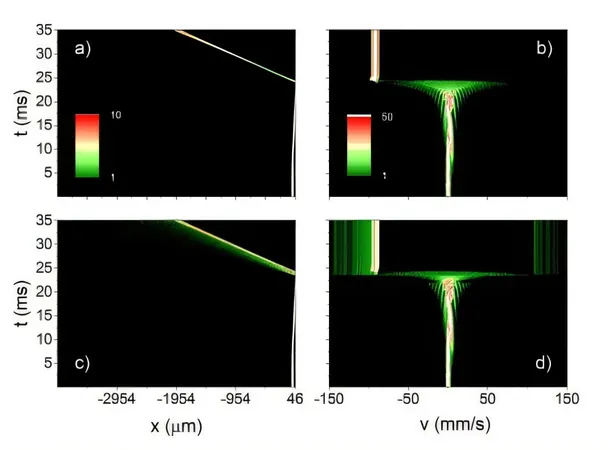
Unveiling the Secrets of Prehistoric Teeth: How Two-Million-Year-Old Fossils Are Reshaping Human Evolution
2025-06-10
Author: Jacques
Unexpected Insights from Enamel
When you think of evolutionary clues, you might not immediately consider the enamel of teeth. However, a groundbreaking study reveals that these hard outer layers hold critical secrets about our ancient ancestors and their relationships.
New Findings Unravel Old Mysteries
Published in the Journal of Human Evolution, researchers have shifted the narrative surrounding tiny pits found in fossilized teeth. Previously thought to indicate malnutrition or illness, these shallow pits might actually point to significant evolutionary traits.
The Significance of Tooth Pits
For those of us dedicated to piecing together the story of human evolution, teeth are a treasure trove of information. The discovery of uniform, circular pits—first identified in the South African species *Paranthropus robustus*—has shed new light on the evolutionary tree connecting various hominins.
More Than Just Defects
Initially assumed to be unique to *P. robustus*, this pitting pattern has also emerged in other *Paranthropus* species and even some *Australopithecus* fossils. The consistency and distribution of these enamel pits suggest they are more than mere defects caused by childhood stress.
Tracing Evolution Across Continents
Studying fossil teeth from sites like the Omo Valley in Ethiopia, which spans over two million years of human evolution, researchers identified these enamel pits across various branches of our evolutionary backdrop, particularly in eastern and southern Africa.
The Great Debate: Defect or Trait?
If the pitting was truly a defect due to stress, we would expect it to correlate with tooth size and be present in both front and back teeth. Instead, the uniform pitting’s unique characteristics indicate a developmental origin—possibly genetically driven with an unknown function.
Genetic Connections and Modern Parallels
Drawing fascinating parallels to modern human conditions, researchers noted similarities with amelogenesis imperfecta, a rare genetic disorder affecting enamel formation. Unlike this disorder, the pits are too common among *Paranthropus* to be considered harmful, suggesting a stable inherited trait.
A New Marker for Evolutionary Relationships
This discovery may provide a new evolutionary marker, enhancing our tools for identifying species based on dental features. Importantly, it supports the theory that *Paranthropus* is a monophyletic group—all its species descending from a recent common ancestor.
Unraveling Mysteries of the ‘Hobbit’
An especially intriguing find is in the teeth of *Homo floresiensis*, known as the 'hobbit' species. Comparisons suggest this species might share a closer evolutionary history with earlier *Australopithecus* than previously believed, albeit more research is required to confirm this connection.
The Road Ahead
While more investigation is essential to fully comprehend the implications of this uniform pitting, the findings present an exciting opportunity to further explore our evolutionary relationships with ancient hominins—potentially reshaping our understanding of human history.









 Brasil (PT)
Brasil (PT)
 Canada (EN)
Canada (EN)
 Chile (ES)
Chile (ES)
 Česko (CS)
Česko (CS)
 대한민국 (KO)
대한민국 (KO)
 España (ES)
España (ES)
 France (FR)
France (FR)
 Hong Kong (EN)
Hong Kong (EN)
 Italia (IT)
Italia (IT)
 日本 (JA)
日本 (JA)
 Magyarország (HU)
Magyarország (HU)
 Norge (NO)
Norge (NO)
 Polska (PL)
Polska (PL)
 Schweiz (DE)
Schweiz (DE)
 Singapore (EN)
Singapore (EN)
 Sverige (SV)
Sverige (SV)
 Suomi (FI)
Suomi (FI)
 Türkiye (TR)
Türkiye (TR)
 الإمارات العربية المتحدة (AR)
الإمارات العربية المتحدة (AR)